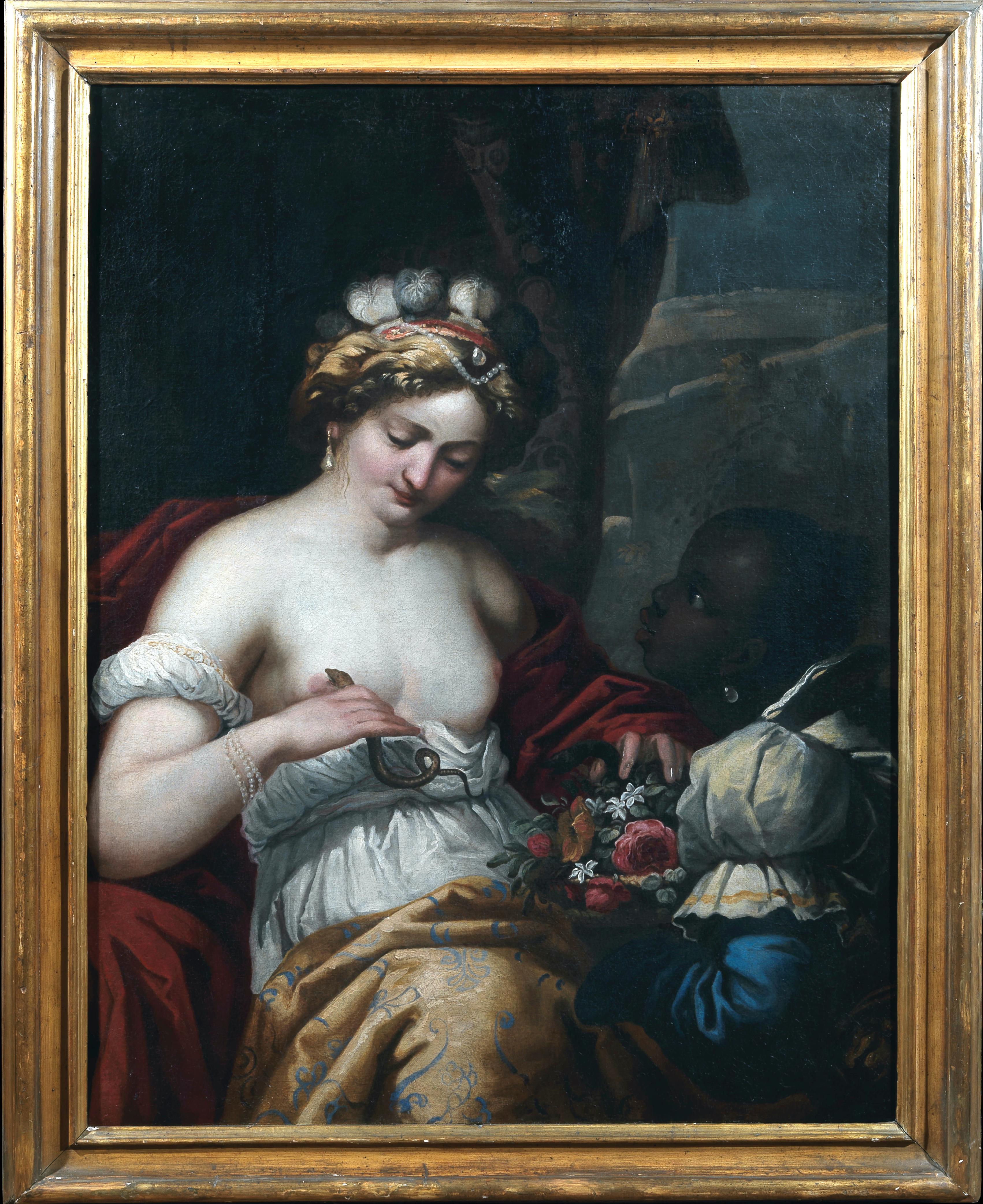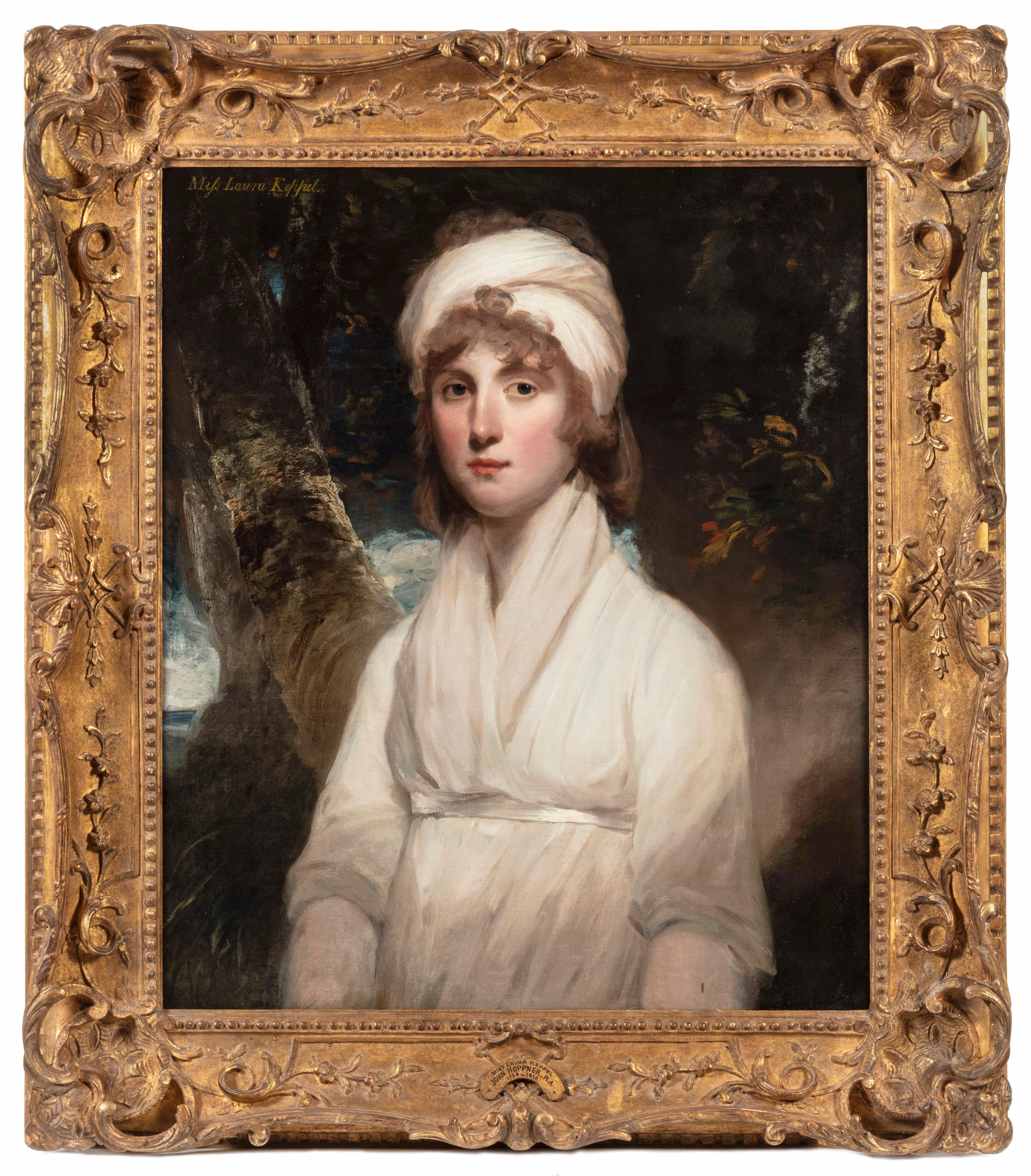Items Similar to Portrait of Owen Ormsby, bust-length, in a brown coat
Want more images or videos?
Request additional images or videos from the seller
1 of 7
Attributed to Gainsborough DupontPortrait of Owen Ormsby, bust-length, in a brown coatLate 18th century
Late 18th century
About the Item
Attributed to Gainsborough Dupont (1754 - 1797, British)
Portrait of Owen Ormsby, bust-length, in a brown coat, with slightly later inscription identifying the sitter
oil on canvas
20 x 18 inches
PROVENANCE.
The Harlech Family since origin.
Thence by decent to Lord Harlech, his sale 2019.
Dupont was born in Sudbury, Suffolk, on 20 December 1754 the eldest son of Thomas Gainsborough's sister Sarah, and her husband Philip Dupont. In 1772 he was apprenticed to Gainsborough, for whom he continued to work until the latter's death in 1788. He was the only assistant Gainsborough is ever known to have employed. He also trained at the Royal Academy Schools, where he became a student in March 1775.
Dupont took over Gainsborough's studio in Schomberg House in 1788, and moved to Bloomsbury in 1793, following the death of Gainsborough's widow. He painted portraits and landscapes in a style of similar to that of his uncle, and also landscapes with architectural ruins, in which he imitated Nicolas Poussin. His principal work is a large picture containing the portraits of the elder brethren of Trinity House, which is in their court-room on Tower Hill.
The inscription including the date 1804 is of later date and has no bearings on the date of the work, it is only the date of death of the sitter.
- Creator:Attributed to Gainsborough Dupont (1754 - 1797)
- Creation Year:Late 18th century
- Dimensions:Height: 18 in (45.72 cm)Width: 20 in (50.8 cm)
- Medium:
- Period:
- Condition:
- Gallery Location:London, GB
- Reference Number:1stDibs: LU67337313152
About the Seller
5.0
Vetted Seller
These experienced sellers undergo a comprehensive evaluation by our team of in-house experts.
Established in 1990
1stDibs seller since 2017
40 sales on 1stDibs
Typical response time: <1 hour
- ShippingRetrieving quote...Ships From: London, United Kingdom
- Return PolicyA return for this item may be initiated within 1 day of delivery.
More From This SellerView All
- 18th C. Portrait of the 4th Earl of Sandwich a View of Constantinople BeyondLocated in London, GBJohn Montagu, 4th Earl of Sandwich (13 November 1718 – 30 April 1792) Attributed to George Knapton (1698-1778) Dressed in the Turkish manner, stand...Category
18th Century Old Masters Figurative Paintings
MaterialsOil
- A Full-Length Portrait of Nicholas I of Russia in a Classical SettingLocated in London, GBA Full-Length Portrait of Nicholas I of Russia in a classical setting. Pietro Labruzzi (1739–1805). 1802. Signed, located and dated lower left: ‘Pietro Labruzzi Roma Pinx Anno 180...Category
Early 1800s Paintings
MaterialsCanvas, Oil
- A Portrait of a Gentleman, thought to be Moses Diego Lopez PereiraLocated in London, GBAustrian School, 18th Century A Portrait of a Gentleman, thought to be Moses Diego Lopez Pereira, 1st Baron d’Aguilar, in an elaborate coat and a powdered wig Oil on canvas Provena...Category
18th Century Paintings
MaterialsCanvas, Oil
- Portrait of Ochius, also called The Passia Ahmed ex Royal Collection of HanoverBy (Attributed to) Sir Godfrey KnellerLocated in London, GBAttributed to Sir Godfrey Kneller (1646 - 1723) A Portrait of Ochius, also called The Passia Ahmed Oil on canvas In a gilded frame Painted circa 1689 following the siege of Belgrad...Category
17th Century Portrait Paintings
MaterialsOil
- An Artist Grinding Colours, Possibly a Self-PortraitLocated in London, GBJan Kupetsky (1667 - 1740) Czech School An artist grinding colours, possibly a self-portrait Oil on canvas Signed, verso : "Joseph Prinzig" Provenance: Private Collection, Hungary ...Category
Late 17th Century Paintings
MaterialsCanvas, Oil
- Portrait of Anne, Lady Russell, later Countess of BedfordBy Anthony van DyckLocated in London, GBA three-quarter length portrait of Anne, Lady Russell, later Countess of Bedford (1615-1684), in a blue dress. Attributed to Sir Anthony Van Dyck. Anne C...Category
17th Century Portrait Paintings
MaterialsOil
You May Also Like
- Venice Landscape Italian Oil on Canvas Painting in Gilt Wood Frame, Belle EpoqueLocated in Firenze, ITThis delightful turn of the century (early 20th century) oil on canvas painting represents an Italian landscape with one of the most famous squares in the world: Piazza San Marco in ...Category
Early 20th Century Impressionist Landscape Paintings
MaterialsCanvas, Oil
- Portrait of a GentlemanBy Ippolito Scarsella (Scarsellino)Located in New York, NYProvenance: Suida-Manning Collection, New York Private Collection Exhibited: Venetian Paintings of the Sixteenth Century, Finch College Museum of Art, New York, October 30-December 15, 1963, no. 31. Veronese & His Studio in North American Collections, Birmingham Museum of Art, Oct. 1-Nov. 15, 1972, and Montgomery Museum of Fine Arts, Dec. 5-Dec. 31, 1972 Literature: Robert L. Manning, A Loan Exhibition of Venetian Paintings of the Sixteenth Century, exh. cat. New York 1963, cat. no. 31ill., as by Veronese Stephen Clayton and Edward Weeks, eds., introduction by David Rosand, Veronese & His Studio in North American Collections, Birmingham 1972, as by Veronese, p. 38 ill. Terisio Pignatti, Veronese, Venice 1976, I, p. 199, cat. no. A225, II, fig. 908, as attributed to Veronese Terisio Pignatti and Filippo Pedrocco, Veronese; catalogo completo dei dipinti, Florence 1991, no. 54°, as attributed to Veronese. Terisio Pignatti and Filippo Pedrocco, Veronese, Milan 1995, II, pp. 517-518ill., cat. no. A 56, under attributed paintings, by Veronese and workshop) John Garton, Grace and Grandeur; The Portraiture of Paolo Veronese, London-Turnhout 2008, p. 237, fig. 77, cat. no. R16, as workshop of Veronese. Scarsellino’s art is widely regarded as critical link between the Renaissance and the Baroque styles in Emilian painting; not only was he an important transmitter of the heritage of the Renaissance, but he was also open to innovative ideas, and was one of the earliest to experiment with the trend to naturalism that would become fundamental to art of the new century. Born around 1550, he received his earliest training from his father Sigismondo, an architect and painter; it was probably while working at his father’s side as a youth that he acquired the nickname Scarsellino, or “little Scarsella”. After absorbing the principles of his art in Ferrara and Parma, he went to Venice in 1570, staying for four years and working in the shop of Veronese. In the following decade, his art —especially in terms of its piety and its development of landscape— demonstrates a strong sympathy with that of the Carracci, with whom he worked in 1592-1593 at the Palazzo dei Diamanti in Ferrara. Maria Angela Novelli and later Alessandra Frabetti both propose that Scarsellino traveled to Rome, although such a trip has not been documented; if he did travel to Rome, it probably would have occurred during the years that Scarsellino’s colleagues Agostino and Annibale Carracci were there, that is, beginning in 1595 and until 1609. The last decades of Scarsellino’s career again involve stylistic experimentation, this time in a manner that would bring his work very close to the progressive figurative naturalism of Carlo Bononi and prepare the way for Guercino. The present portrait of a distinguished gentleman had been long thought to be by Paolo Veronese and was in fact attributed to him by such distinguished connoisseurs as Adolfo Venturi and Wilhelm Suida. The portrait’s style is, however, distinct from Veronese’s, although clearly indebted to it, and the attribution to the young Scarsellino is wholly convincing. The painting would then date from the 1570s – a date confirmed by the costume the subject wears. The puffed hat that appears in the painting had a rather short-lived vogue in the early 1570s. One sees it in Giambattista Moroni’s Portrait of Count...Category
18th Century and Earlier Baroque Portrait Paintings
MaterialsCanvas, Oil
- Portrait of a ManLocated in New York, NYProvenance: with Leo Blumenreich and Julius Böhler, Munich, 1924 Dr. Frederic Goldstein Oppenheimer (1881-1963), San Antonio, Texas; by whom given to: Abraham M. Adler, New York, un...Category
16th Century Old Masters Portrait Paintings
MaterialsOil, Panel
- Portrait Painting Oil on Canvas by Joseph BadgerLocated in Rome, ITJoseph Badger (c. 1707–1765) was a portrait artist in Boston, Massachusetts, in the 18th century. This amazing painting depicting a young boy with a bird. oil on canvas cm 93 x73...Category
18th Century Academic Portrait Paintings
MaterialsOil
- Cleopatra Queen of Egypt 17' century Painting Oil on CanvasLocated in Rome, ITAmazing painting of Cleopatra oil on canvas with a gilt wood frame. Attributed to Giuseppe Diamantini (Fossombrone 1621-Venice 1705) The dramatic subject of the painting depicts th...Category
Late 17th Century Academic Figurative Paintings
MaterialsOil
- Cleopatra Queen of Egypt 17' century Painting Oil on CanvasLocated in Rome, ITAmazing painting of Cleopatra oil on canvas with a gilt wood frame. Attributed to Giuseppe Diamantini (Fossombrone 1621-Venice 1705) The dramatic subject of the painting depicts th...Category
Late 17th Century Academic Figurative Paintings
MaterialsOil




